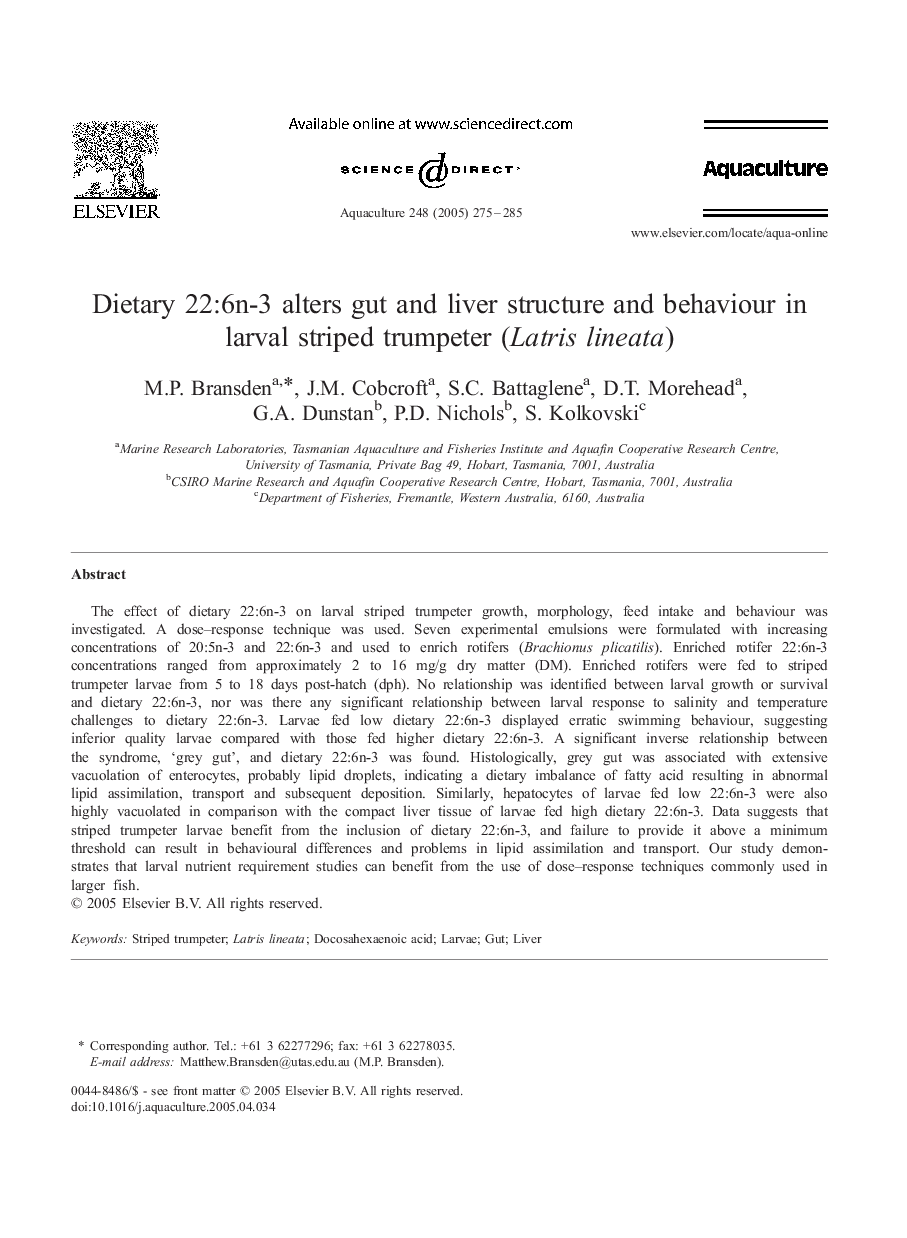| Article ID | Journal | Published Year | Pages | File Type |
|---|---|---|---|---|
| 8974832 | Aquaculture | 2005 | 11 Pages |
Abstract
The effect of dietary 22:6n-3 on larval striped trumpeter growth, morphology, feed intake and behaviour was investigated. A dose-response technique was used. Seven experimental emulsions were formulated with increasing concentrations of 20:5n-3 and 22:6n-3 and used to enrich rotifers (Brachionus plicatilis). Enriched rotifer 22:6n-3 concentrations ranged from approximately 2 to 16 mg/g dry matter (DM). Enriched rotifers were fed to striped trumpeter larvae from 5 to 18 days post-hatch (dph). No relationship was identified between larval growth or survival and dietary 22:6n-3, nor was there any significant relationship between larval response to salinity and temperature challenges to dietary 22:6n-3. Larvae fed low dietary 22:6n-3 displayed erratic swimming behaviour, suggesting inferior quality larvae compared with those fed higher dietary 22:6n-3. A significant inverse relationship between the syndrome, 'grey gut', and dietary 22:6n-3 was found. Histologically, grey gut was associated with extensive vacuolation of enterocytes, probably lipid droplets, indicating a dietary imbalance of fatty acid resulting in abnormal lipid assimilation, transport and subsequent deposition. Similarly, hepatocytes of larvae fed low 22:6n-3 were also highly vacuolated in comparison with the compact liver tissue of larvae fed high dietary 22:6n-3. Data suggests that striped trumpeter larvae benefit from the inclusion of dietary 22:6n-3, and failure to provide it above a minimum threshold can result in behavioural differences and problems in lipid assimilation and transport. Our study demonstrates that larval nutrient requirement studies can benefit from the use of dose-response techniques commonly used in larger fish.
Related Topics
Life Sciences
Agricultural and Biological Sciences
Aquatic Science
Authors
M.P. Bransden, J.M. Cobcroft, S.C. Battaglene, D.T. Morehead, G.A. Dunstan, P.D. Nichols, S. Kolkovski,
